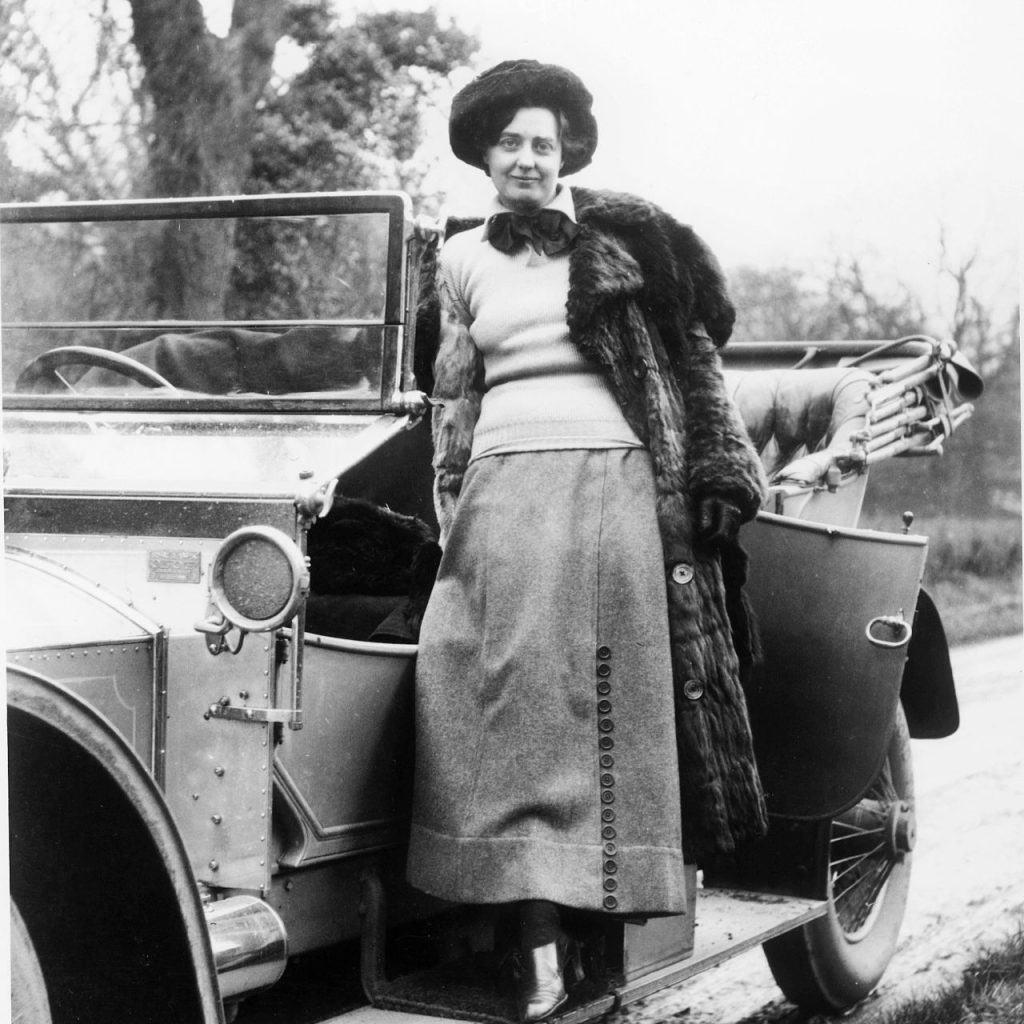The Spirit of Ecstasy is more than just a mascot; it’s an emblem of the luxury, craftsmanship, and bespoke nature that define Rolls-Royce.
This iconic figure, with her flowing robes and poised elegance, has graced the hoods of Rolls-Royce vehicles for over a century. Representing a tradition of personalization that has always been central to the brand.
A Vision Born in the Early Days of Rolls-Royce
The roots of the Spirit of Ecstasy trace back to 1910 when Claude Johnson.
The General Managing Director of Rolls-Royce, sought to safeguard the dignity of the marque.
Concerned that undignified mascots were detracting from the prestige of Rolls-Royce vehicles.
Johnson turned to Charles Sykes, a talented artist and sculptor. To craft an official emblem that would encapsulate the essence of the brand.

Inspiration from The Winged Victory of Samothrace
One popular theory about the origins of the Spirit of Ecstasy suggests that Johnson was deeply impressed by The Winged Victory of Samothrace, a celebrated ancient Greek sculpture housed at the Louvre.
This masterpiece, known for its dynamic form and sense of movement, left a lasting impression on Johnson. He reportedly instructed Sykes to view the sculpture and draw inspiration from its grandeur.
The result was the Spirit of Ecstasy, a figure that exudes grace, motion, and timeless elegance—qualities that mirror the values of Rolls-Royce.
The Enigma of Eleanor Velasco Thornton
Adding to the allure of the Spirit of Ecstasy is the legend surrounding its model.
Eleanor Velasco Thornton, the Private Secretary to Lord Montagu of Beaulieu, is widely believed to have been the muse for Sykes’ creation.
Thornton’s close relationship with Montagu.
An early Rolls-Royce patron and a key figure in the motoring world, provided the connection that led to her involvement in the creation of this emblem.
Thornton’s influence on the Spirit of Ecstasy adds a layer of mystery and romance to the story.
Her association with Montagu and her potential role as Sykes’ model have become an integral part of the Rolls-Royce narrative, contributing to the mascot’s enduring mystique.

The First Rolls-Royce to Wear the Spirit of Ecstasy
The first vehicle to be adorned with the Spirit of Ecstasy was Montagu’s Silver Ghost. Setting a precedent that would continue throughout Rolls-Royce’s history.
The Silver Ghost, already a symbol of excellence and luxury, became even more distinguished with the addition of this new mascot.
The Spirit of Ecstasy quickly became synonymous with the brand. Representing the pinnacle of automotive design and craftsmanship.
The Evolution of a Timeless Symbol
Over the years, the Spirit of Ecstasy has undergone subtle changes. But its core design has remained consistent, preserving the original vision that Sykes and Johnson conceived.
Today, the figure is instantly recognizable, a testament to its enduring appeal and the timeless values it represents.
Rolls-Royce has continued to honor the tradition of bespoke craftsmanship. Allowing patrons to personalize the Spirit of Ecstasy in various ways.
Whether through different materials, finishes, or even bespoke designs.
The Spirit of Ecstasy remains a canvas for individual expression, embodying the unique character of each Rolls-Royce vehicle.

Bespoke Personalization: A Modern Continuation of Tradition
The ability to add bespoke details to a Rolls-Royce is one of the marque’s principal attractions today. This tradition of personalization is rooted in the very history of the Spirit of Ecstasy.
Just as the mascot was created to embody the distinct character of Rolls-Royce vehicles. Today’s patrons continue to seek ways to make their vehicles truly their own.
From hand-painted coach lines to custom interiors and unique exterior finishes. The possibilities for personalization are nearly limitless.
Each bespoke element is crafted with the same attention to detail and commitment to excellence that has defined Rolls-Royce for over a century.
The Spirit of Ecstasy: More Than a Mascot
The Spirit of Ecstasy is far more than a mere ornament. It’s a symbol of the luxury, heritage, and personalized experience that Rolls-Royce offers to its patrons.
This iconic figure has witnessed the evolution of the automotive industry and has remained a constant reminder of the brand’s commitment to excellence.
As Rolls-Royce continues to innovate and expand its offerings. The Spirit of Ecstasy remains a steadfast symbol of the marque’s core values.
Whether gracing the hood of a classic Silver Ghost or a modern Phantom. The Spirit of Ecstasy continues to inspire admiration and respect, a testament to its timeless appeal.
The Legacy of Rolls-Royce and the Spirit of Ecstasy
The legacy of the Spirit of Ecstasy is inextricably linked with the legacy of Rolls-Royce itself. For over a century. This emblem has represented the pinnacle of luxury, craftsmanship, and personalized service.
It has become a symbol of aspiration, a mark of distinction for those who seek the very best in automotive design.
Rolls-Royce’s commitment to bespoke craftsmanship ensures that the Spirit of Ecstasy will continue to be a defining feature of the brand for generations to come.
Each new vehicle that carries this emblem is a continuation of a tradition that began over a century ago, a tradition that celebrates individuality, luxury, and the art of automotive design.
Conclusion: The Enduring Appeal of the Spirit of Ecstasy
The Spirit of Ecstasy is more than just a symbol; it’s a representation of the values that have made Rolls-Royce a leader in the luxury automotive market.
Its origins, steeped in history and legend, add to its allure, making it a timeless icon that continues to captivate the imagination.
As Rolls-Royce looks to the future, the Spirit of Ecstasy will undoubtedly remain a central element of the brand’s identity.
Its ability to evolve while staying true to its original design reflects the balance between tradition and innovation that defines Rolls-Royce.
The Spirit of Ecstasy, like the vehicles it adorns, is a masterpiece of design and craftsmanship, a true icon in the world of luxury automobiles.




































